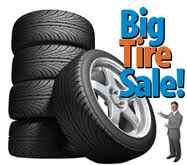Buyers' Loyalties Loosen
Owners of Japanese-brand vehicles buy Japanese-brand vehicles. Owners of domestic-brand vehicles buy domestics. So says auto industry wisdom.
But lately, that wisdom isn't such a sure bet.
Consumers have shown a recent willingness to cross-shop outside their traditional habits, according to market monitors. Prodded and lured in one direction by such factors as inventory shortages at import leaders Toyota and Honda, and shooed in the opposite direction by disappearing brands such as Pontiac, Saturn and Mercury, some consumers find themselves unanchored.
The billion-dollar question: Are they changing shopping patterns out of temporary inconvenience, or is a new attitude emerging in the consumer standoff between import and domestic brands?
Compete Inc., an automotive market research firm in Boston, finds that the tendency of Japanese import-brand shoppers to cross-shop Chevrolet, Ford and Dodge has trended steadily upward since the first quarter of 2010.
Similarly, J.D. Power and Associates reports that the percentage of auto shoppers who traded in an Asian import-brand vehicle and bought another one has declined slightly. Asian-brand loyalty dropped from a consistent 80 percent at the beginning of 2010 to 76 percent in third quarter 2011.
These may be modest changes, but they leave the industry uncertain.
'New Sense of Patriotism'
"Something is happening right now; it's just a little hard to say what it is "There is clearly a new sense of patriotism out there, "We can hear it when we talk to customers."
Patriotism alone won't sell cars: "It's not necessarily causing people to buy Fords; it's causing them to shop Ford. What's causing people to buy Ford is good products."
The past three years of upheaval -- recession, bankruptcies, bailouts, lending crises, fuel-price spikes, Japanese product-quality glitches, disappearing brands and the catastrophic March 11 earthquake in Japan -- has shaken up some consumer habits. Japanese-brand dealers were hit hard this summer by inventory shortages. Nissan rebounded fastest, and its U.S. market share is increasing. Market shares for Toyota and Honda are down from a year ago. At the same time, market shares for Chevrolet, Ford and Dodge are up.
Better Domestics
A big coincidence? "What's happening, is that the domestic manufacturers are delivering better-quality products right now, with better styling and fuel efficiency. Customers want to come see it.
Lincoln Merrihew, managing director for transportation at market researcher Compete, believes the domestic brands are partially benefiting from picking up "the leftovers" of domestic brands that were killed -- Saturn, Pontiac, Hummer and Mercury.
But he cites Compete shopper data to say that there is also organic growth. Combined Detroit 3 market share is up more than 2 points for the first nine months of this year, while Japanese-brand share is down nearly 4 points.
Compete tracks online car shoppers from auto site to auto site to see what other vehicles they are considering.
Merrihew says import shoppers were warming to domestic model considerations before the earthquake.
Compete data show that in July the ranking of Chevrolet, Ford or Dodge vehicles for Toyota shoppers was 4.5, meaning typically their fourth or fifth choice. By comparison, in fourth quarter 2009, the Detroit 3 vehicles were a more distant 5.5 choice.
Honda Loyalty Stands Out
Honda shoppers appear to be the most import-loyal of the Japanese market leaders. Compete reports that in December 2009, a Chevrolet, Ford or Dodge vehicle was a seventh-place choice for Honda shoppers. By July, those choices had risen, but only to fifth.
Nissan intenders ventured to a Chevrolet, Ford or Dodge vehicle as their sixth choice in late 2009, according to Compete. By this summer, those choices had risen to about 3.5.
Al Castignetti, vice president of Nissan sales at Nissan North America, says model segment offerings will determine where customers will shop. Because few brands offer minivans, for example, Chrysler minivan shoppers also will consider Nissan's recently reintroduced Quest. "We look at cross-shop data, and it is different for every segment," he adds.
Ford's decision to leave the compact pickup business will mean that those owners likely will consider a Nissan Frontier. Nissan's recently introduced compact sporty crossover, the Juke, "is a white-space product. Therefore, it is drawing shoppers from both sides of the import-domestic aisle.





























